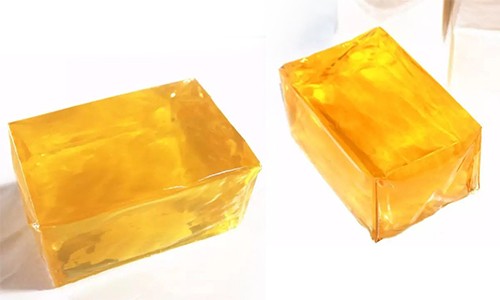
1.Hot Melt Adhesive Properties
Hot melt adhesive (HMA) is a 100% solid-content thermoplastic material. It exists as a solid at room temperature, liquefies upon heating, and rapidly solidifies upon cooling. Key components include:
Base resins (e.g., EVA, PO, PUR)
Tackifiers (enhance adhesion)
Plasticizers (adjust flexibility)
Antioxidants (prevent thermal degradation)
Coating Process
HMA is heated to a molten state (120–180°C) in a melting unit, uniformly applied to the substrate via a coating system, and cooled to form an adhesive layer.
2.Hot Melt Adhesive Coating Process Flow
Material Preparation
HMA pellets/blocks are fed into a melting device (e.g., melt tank, screw extruder).
Substrate pretreatment (cleaning, corona treatment to improve adhesion).
Melting & Delivery
HMA is melted in the tank and delivered to the coating head via gear pump or screw.
Precise temperature control prevents carbonization or performance loss.
Coating Methods
Method Application
Roll Coating Continuous uniform coating
Spray Coating Irregular/complex surfaces
Knife Coating High-precision thickness control
Extrusion Coating High-strength bonding applications
Cooling & Curing
Coated substrate is rapidly cooled (curing time: 1–3s) via chill rolls or forced-air systems.
Winding/Slitting
Cured material is wound into rolls or slit into products (e.g., labels, tapes).
3.Core Equipment for HMA Coating
Melting System: Melt tank, heaters, temperature control.
Coating Head: Roll/spray/extrusion modules.
Conveyance System: Belts/rollers (ensure smooth substrate travel).
Cooling System: Chill rolls, blowers, water-cooling units.
Control Unit: PLC/industrial computer (regulates temperature, speed, coating weight).
4.Application Fields
Packaging: Carton sealing, gift box bonding, label backing.
Hygiene Products: Diaper/sanitary napkin structural bonding.
Automotive: Interior trim assembly, acoustic material lamination.
Textiles: Nonwoven fabric lamination, garment interlining.
Electronics: Temporary fixation of flexible circuit boards.
V. Advantages of HMA Coating
Eco-friendly: Solvent-free, VOC-compliant.
High efficiency: Instant curing for high-speed production.
Versatility: Bonds diverse materials (plastics, metals, wood).
Cost-saving: Thin, uniform adhesive layers minimize usage.
VI. Key Process Parameters
Melt Temperature: Affects flowability (EVA: 150–170°C).
Coating Weight: 5–50 g/m² (adjusted via speed/die gap).
Substrate Tension: Prevents wrinkling/misalignment.
Cooling Efficiency: Ensures rapid setting and anti-blocking.
5.Common Issues & Solutions
Issue Solution
Uneven coating Clean clogged dies; optimize temperature/pressure
Adhesive carbonization Reduce melt temp; shorten high-temp exposure
Insufficient adhesion Enhance pretreatment; upgrade HMA grade
Substrate deformation Implement staged cooling
 HOT LINE: 086-577-65159218
HOT LINE: 086-577-65159218












